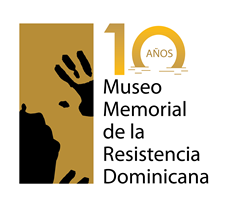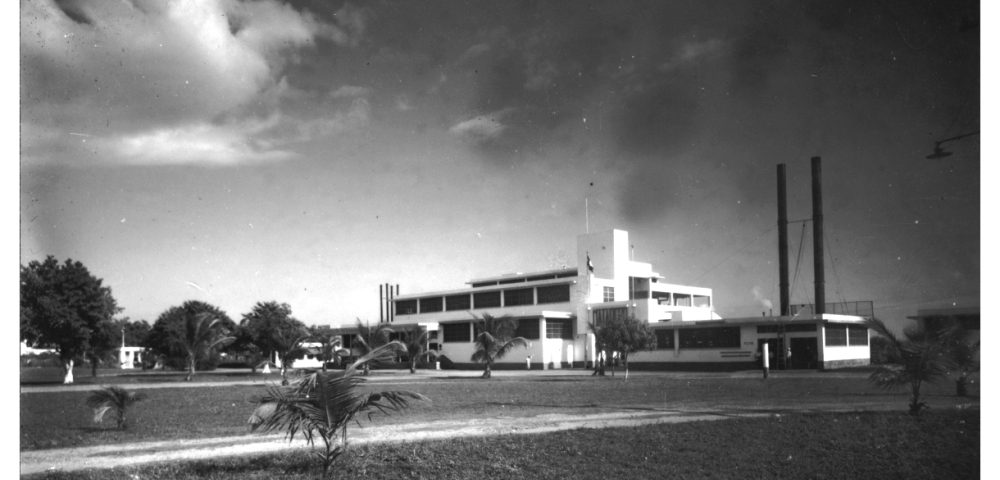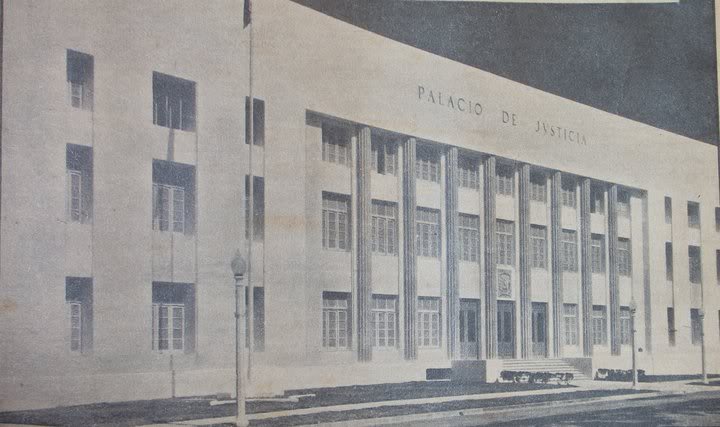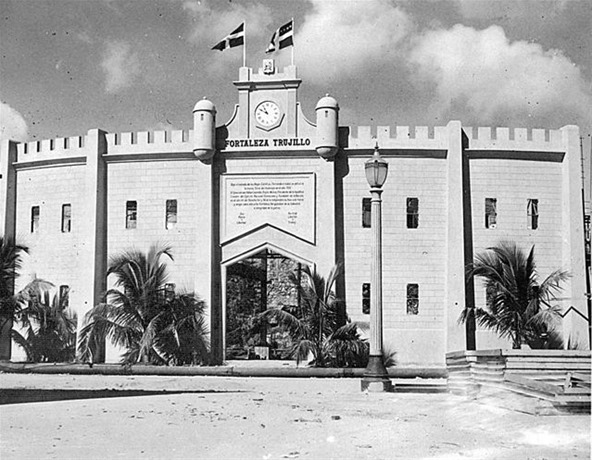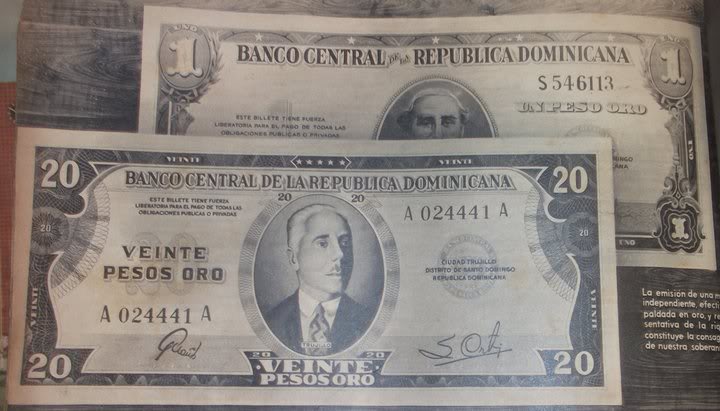The myth of the Dominican industry

The myth of the creation of the Dominican peso
February 24, 2017
The Armed Forces Myth
February 24, 2017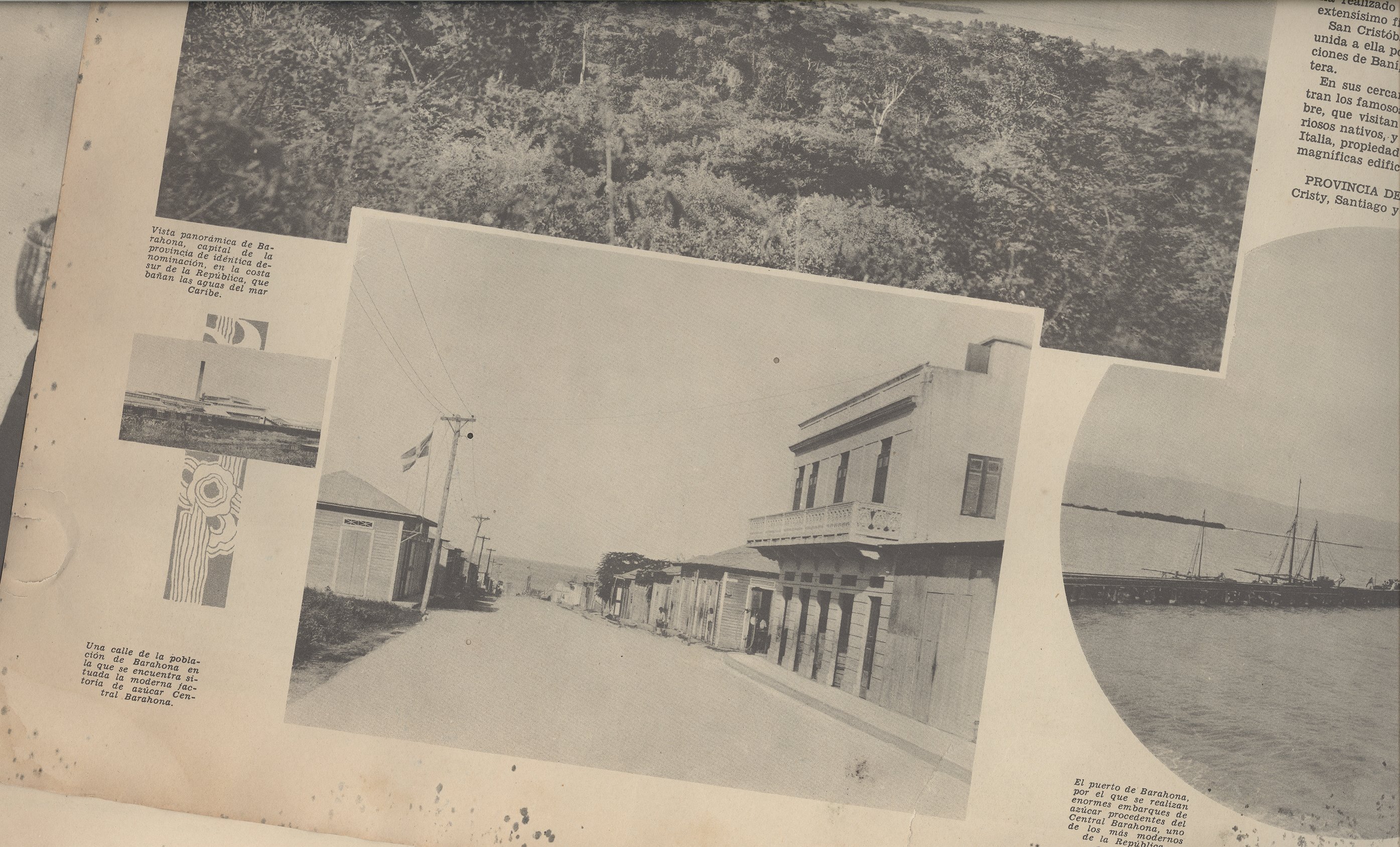
Even before he came to power, Rafael L. Trujillo was known for his unbridled behavior aimed at the fraudulent accumulation of wealth. The same behavior was registered by several of his brothers -Arismendi, Aníbal and Pedro- who became famous as cattle rustlers, that is to say, thieves of cattle.
Early as head of the army, he appeared in 1929 in several files and complaints received by President Vásquez, related to overpriced purchases of clothing and weapons for the army. The caudillo and President Horacio Vásquez, embarked in his continuist project, did not pay attention to the denunciations, in the belief that Trujillo would support him in his aspirations to continue in power.
Rafael L. Trujillo for the accumulation of wealth, reached delirious levels as soon as he assumed the Presidency of the Republic in 1930, initiating almost immediately forced evictions of landowners and cattle ranchers from their properties, forced purchases at vile prices of beautiful haciendas in full production, occupying large and precious estates of his opponents, where thousands of prisoners were taken for forced and free labor, and establishing monopolistic companies protected by legislation created for such purposes, as was the case of the Cía de Seguros San Rafael, favored by a law that obliged employers to insure their employees against work accidents. Another example is that of the Fabrica de Pintura (Paint Factory) and the municipal dispositions that obliged to paint the facades of the houses annually.
In this first stage of Trujillo's original accumulation of capital, an important role was also played by the founding of the Dominican Party in which all public employees were obliged to enroll, who were obliged to contribute 10% of their salary for its maintenance, the creation of the monopoly of salt distribution, the founding of a usurious financial company destined to purchase the monthly salaries of public employees with a 5% discount, the early monopolization of the State's purchases of construction and hardware materials, through the creation of a business managed by his brother-in-law Francisco Martínez Alba, to which was added the foundation of a dairy company to monopolize the sale of milk in the capital city and an industrial slaughterhouse for the sale of meat in the same town. .
For the supply of milk and meat, Trujillo created the "Hacienda Fundación", located near Santo Domingo. At that time, he organized several sawmills on state lands in the mountains of the border area.
In 1933, Trujillo broadened the scope of his ambitions and decided to also begin to venture into the industrial field and therefore enacted Law No. 672, by which new industries created to "manufacture articles different from those already produced" in the country were freed from all taxes. Shortly thereafter, he began the construction of a peanut oil factory, which was named: "Sociedad Industrial Dominicana".
The outbreak of World War II in 1939, opened for Trujillo the opportunity for unsuspected business, not only because many of our main export products rose in price, but also because the State's income increased significantly. In addition, dozens of imported articles became scarce because of that war, and their prices went through the roof, as were all vehicle spare parts, hardware items, and not a few edible articles of massive use, such as codfish, herring, beans, rice, etc. In the context of the world war, Trujillo and his family established a real monopoly over all mass consumption products that were imported and exported, even controlling transportation (a service that became more expensive due to the conflict), founding a company for maritime transportation and another for air transportation.
A report from the U.S. Embassy in 1944, emphasized that "no commercial or industrial enterprise of any significant proportions could be established by Dominicans without being obliged to share its profits with Trujillo or some of his associates". Around that time, the dictator founded the Dominican Cement Factory, which began production in 1947, and the Dominican Footwear Factory (FADOC), which supplied police and military boots. In order to increase the sale of shoes, provisions were issued prohibiting peasants from entering the cities barefoot.
When World War II ended, Trujillo's fortune was immense and his income from profits was around 10 million dollars a year, a fabulous sum for the time, and he had become one of the richest men in Latin America.
But the dictator's greed was unstoppable and the accumulative race continued with new vigor. During those years he began his ambition to take over the sugar industry, mostly owned by North Americans. Shortly thereafter, he bought five small sugar mills from the West Indies Sugar Co. for almost US$36 million, and the Montellano sugar mill from the American Edwin Kilbourne, began the construction of the Catarey sugar mill, located in Villa Altagracia, and later the Río Haina sugar mill, which the dictatorship claimed was the largest in the world, the latter investments exceeding US$25 million.
To "round out" its industrial productive activities and make them more lucrative, in 1953, the Trujillo government acquired for 13.5 million dollars the main private electric power generating company, the Dominican Electricity Corporation, of North American capital, and from then on its industrial and commercial monopolies paid a symbolic and very low amount for the consumption of electric power. Another way of illicit enrichment.
Naturally, the dictatorship's policy of monopolization of the economy strangled the private sector, that is, the Dominican bourgeoisie, and by limiting free competition to the extreme, it stifled the economic development of the nation, and made Trujillo master and lord of industry, agricultural and livestock production and also of national commerce.
It is worth noting that in Trujillo's agricultural enterprises, tens of thousands of common and political prisoners worked under conditions of true super-exploitation. In 1955, the average wage of an agricultural worker barely reached a dollar and a half, and two dollars and fifty cents was the average wage of an industrial worker.
At the time of his death, Trujillo, his relatives and associates owned more than 50% of the best arable land in the country, which involved the monopolization of close to 5 million tareas of the best quality land.
Of the total capital invested in the national industry, which amounted to almost 307 million dollars, Trujillo and his relatives owned 155 million, or 51%; the national private sector barely controlled 7% invested in the industry, while foreign capital, mostly North American, owned 130 million, that is, the remaining 42%.
The following is a list of the main industrial and commercial companies owned by the dictator and where he was a minority shareholder, but his relatives controlled the rest of the shares.
Industrial companies in which Trujillo and his relatives hold a majority interest
Capital Companies Participation Paid-in Capital %1. Azucarera Haina, C. por A. 100,000.000.00 100
2. Industria Dominicana de Calzados, C. por A. 50.000.00 100
3. Sacos y Tejidos Dominicanos, C. por A. 5.320.000.00 100
4. Fabrica de Aceites Vegetales, C. por A. 461.000.00 100
5. Tenería Fac. 2. C. por A. 300.000.00 100
6. Consorcio Algodonero Dom. C. por A. 500.000.00 100
7. Sisal Dominicano 656.000.00 100
8. Sal y Yeso Dominicano (Refinería Sal) C. por A. 23.424.000.00 100
9. Fabrica de Baterías Dominicana, C. por A. 100.000 65.00
10. Planta Recauchado C. por A. 275.000 69.64
11. Compañía Anónima Tabacalera C. por A. 900.000 71.93
12. Chocolatera Industrial, C. por A. 3.033.000 92.86
13. Fábrica Dominicana de Cemento, C. por A. 8.000.000 72.86
14. Fábrica Dominicana de Discos, C. por A. 46.100 97.84
15. Industria Licorera Altagracia, C. por A. 116.000 87.84
16. Industria Nacional del Panel, C. por A. 3.09.550 83.87
17. Industria Nacional del Vidrio, C. por A. 2.500.000 92.11
18. Industria Dominico-Suiza, C. por A. 1.425.500 68.93
19. Molinos Dominicanos, C. por A. 3.135.100 67.82
20. Pinturas Dominicanas, C. por A. 380.000 82.11
21. Pinturas Dominicanas, C. por A. 900.000 96.05
Commercial companies
CapitalCía. De Seguros San Rafael, C. por A. 400.000
Atlas Comercial C. Por A. 1.996.000
Caribeans Motors Co., C. por A. 2.000.000
Ferreteria Reid 974.600
Dominican Motors Co., C. por A. 1.088.500
Sociedad Inmobiliaria Dom. C. por A. 2.500.000
Commercial companies in which Trujillo was a minority shareholder, but his relatives and associates controlled the remaining shares. Capital
Equipo y Construcción C. Por A. 600.000 Fomento Industrial 1.292.100 Mercantil Agrícola, C. por A. 5.000 Seguros en General, C. por A. 129.000 Radio HIN, C. por A.Quisqueya Motor& Co. 309.000
Ferretería El Marino C. por A. 245.000
Santo Domingo Country Club, C. porA. 100.800
Comercial Dominicana C. por A. 113.100
$2.794.000Capital invested in the industrial sector in 1961, according to origin
Capital %
National Total 306,833,025 100
Foreign Investments 130,000,000 42
Trujillo and family members 155,265,650 51
Private sector (national bourgeoisie) 21,567,375 7
These data only involve capital in the industrial sector. The calculations of Trujillo and family capitals do not include the agricultural sector properties dedicated to the cultivation of rice, sisal, peanuts, bananas, various small fruits, and livestock production, since they are not registered by value in 1961.
.